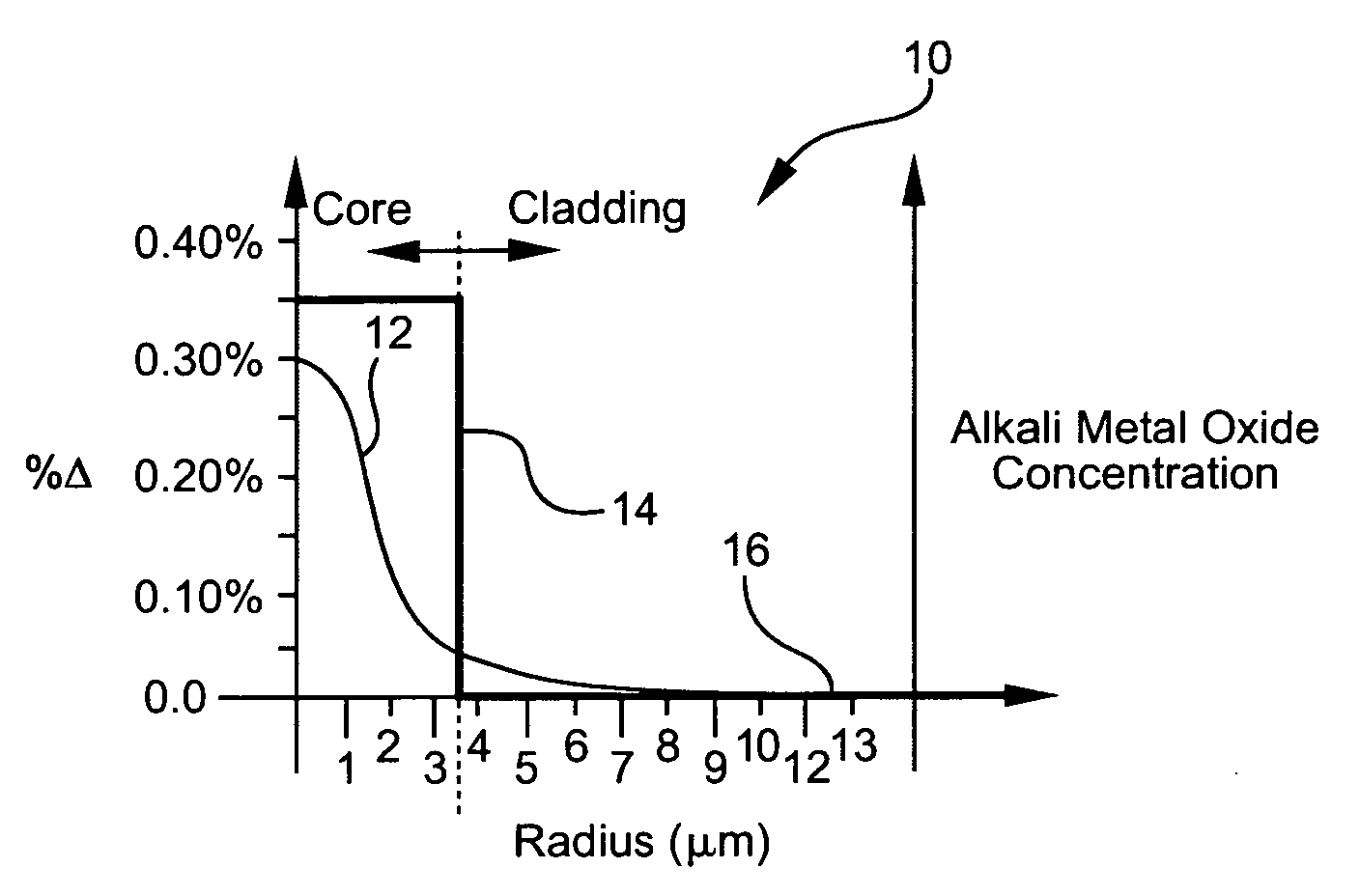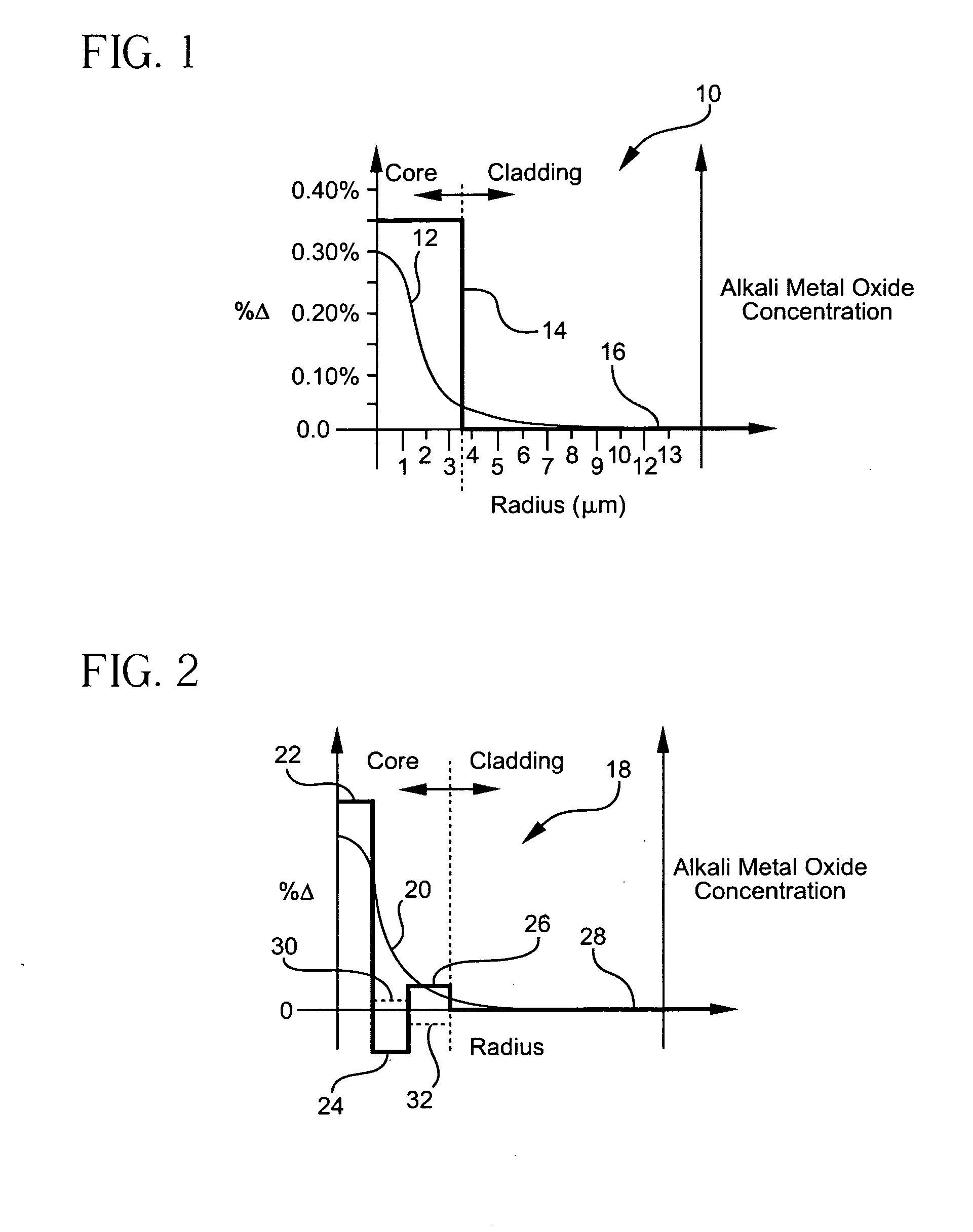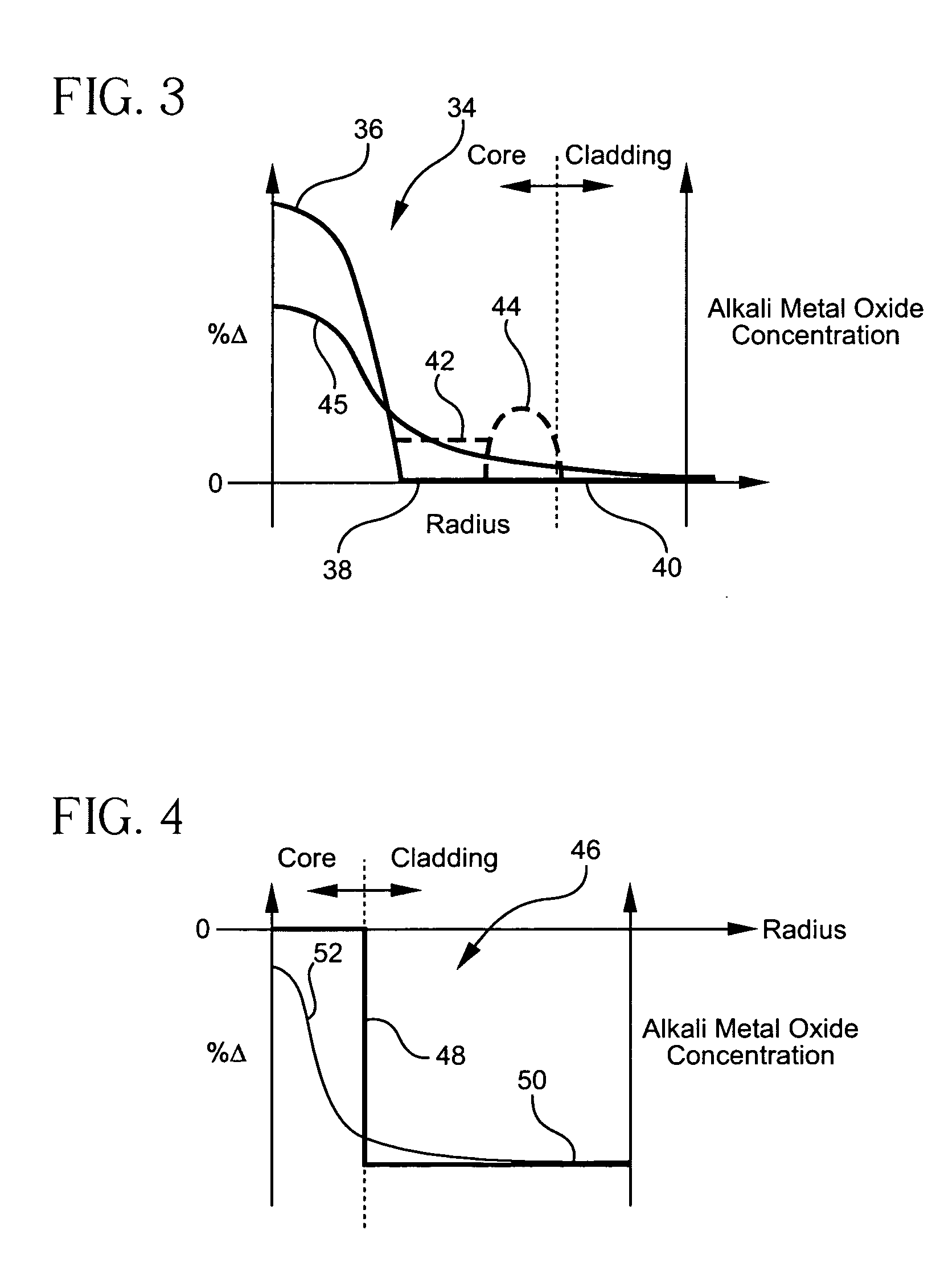Optical fiber containing an alkali metal oxide and methods and apparatus for manufacturing same
a technology of optical fiber and alkali metal oxide, which is applied in the direction of manufacturing tools, glass deposition burners, instruments, etc., can solve the problems of amplifiers representing a significant system cost and the principal limitation attribute of optical fiber, and achieve the effect of increasing the radius
- Summary
- Abstract
- Description
- Claims
- Application Information
AI Technical Summary
Benefits of technology
Problems solved by technology
Method used
Image
Examples
example 1
A K2O-doped glass core rod was formed in accordance with the method described with reference to FIG. 11 herein above. As shown in FIG. 17, the glass core rod had a K2O concentration 164 as a function of radius that approximated a Gaussian curve. The curve 166 indicates the relative refractive index of the glass rod with respect to pure silica. The starting tube for the K2O diffusion was pure (undoped) silica The core rod had a K2O concentration 164 having a maximum at about the centerline 168 of the rod of about 1 wt. %. The portion 171 corresponding to the outer portion of the rod is preferably substantially devoid of alkali doping. In particular, the doping is such that the outer half portion of the rod has the lowest concentration of alkali and the inner half portion has the greatest concentration. More particularly, it is preferred that the peak concentration in the outer half portion has less than 50% of the alkali dopant peak concentration in the inner half; more preferably l...
example 2
A Na2O-doped glass rod was formed in a method as described herein above with reference to FIG. 11. As shown in FIG. 18, the glass rod had a Na2O concentration 170 as a function of radius that approximated a Gaussian curve. The curve 172 indicates the relative refractive index of the glass rod with respect to pure silica. The rod had a Na2O concentration 170 having a maximum at about the centerline 174 of the glass rod of greater than 2 wt. %.
example 3
A silica tube was doped with K2O using the method disclosed herein and as depicted in FIG. 12. The alkali metal source compound 110 was KI. Burner 114 was used to heat the KI to a temperature of between about 1100° C. to 1200° C. Burner 124 was traversed along tube 106 at a speed of about 220 mm / min in a forward direction and 400 mm / min in a reverse direction until the alkali metal source compound 110 was vaporized. Reservoir 108 was cut from tube 106 and tube 106 was collapsed to form a first glass rod. The first glass rod was etched in 49% HF for 13 hours. The first glass rod was then placed in a lathe and silica glass soot was deposited on the first glass rod in a conventional outside vapor deposition process to form a first composite glass article. The first glass article was consolidated, dried and F-doped by conventional consolidation doping, and then drawn to form a second glass rod. The second glass rod was measured with a microprobe across a diameter of the rod. FIG. 19 de...
PUM
| Property | Measurement | Unit |
|---|---|---|
| Length | aaaaa | aaaaa |
| Fraction | aaaaa | aaaaa |
| Fraction | aaaaa | aaaaa |
Abstract
Description
Claims
Application Information
 Login to View More
Login to View More - R&D
- Intellectual Property
- Life Sciences
- Materials
- Tech Scout
- Unparalleled Data Quality
- Higher Quality Content
- 60% Fewer Hallucinations
Browse by: Latest US Patents, China's latest patents, Technical Efficacy Thesaurus, Application Domain, Technology Topic, Popular Technical Reports.
© 2025 PatSnap. All rights reserved.Legal|Privacy policy|Modern Slavery Act Transparency Statement|Sitemap|About US| Contact US: help@patsnap.com



